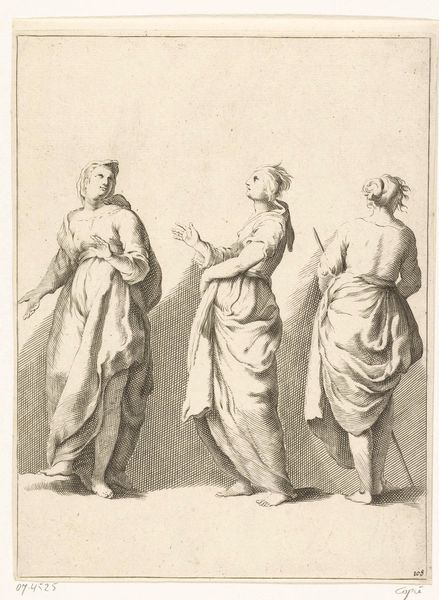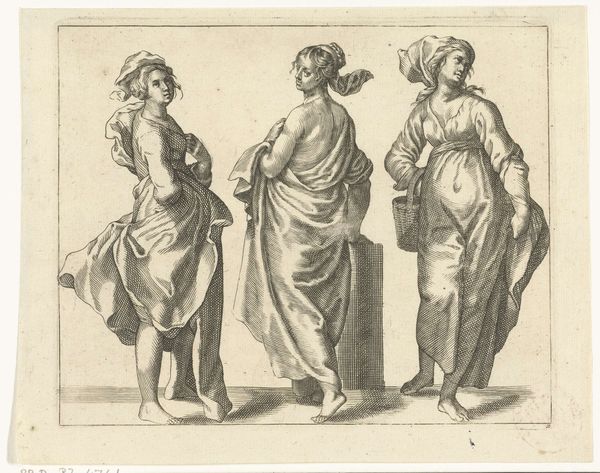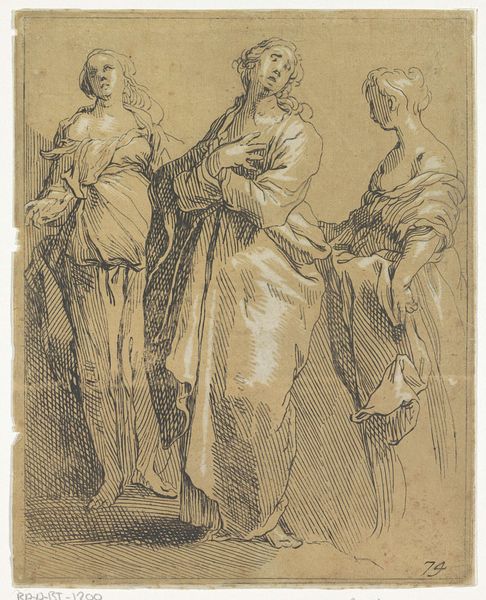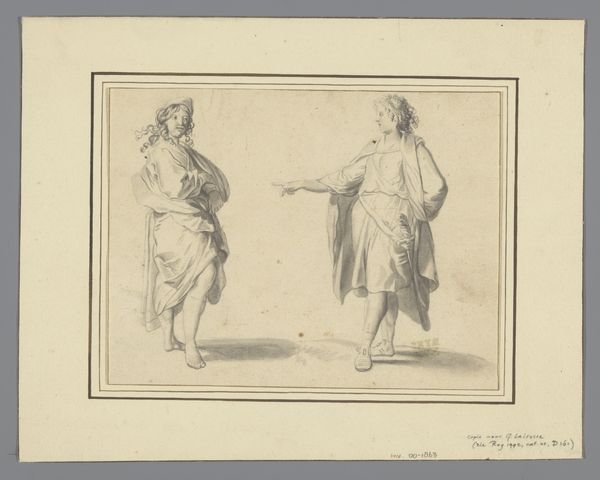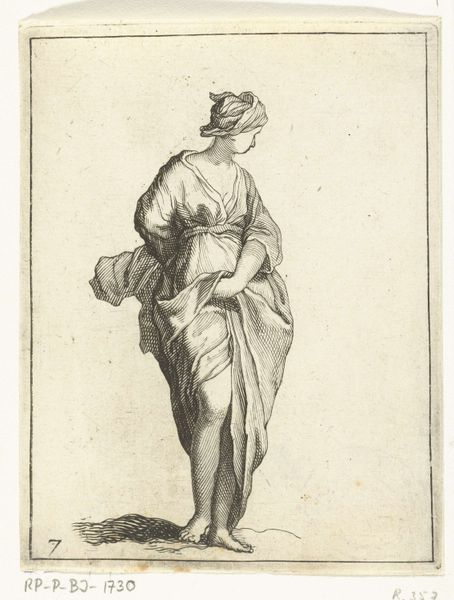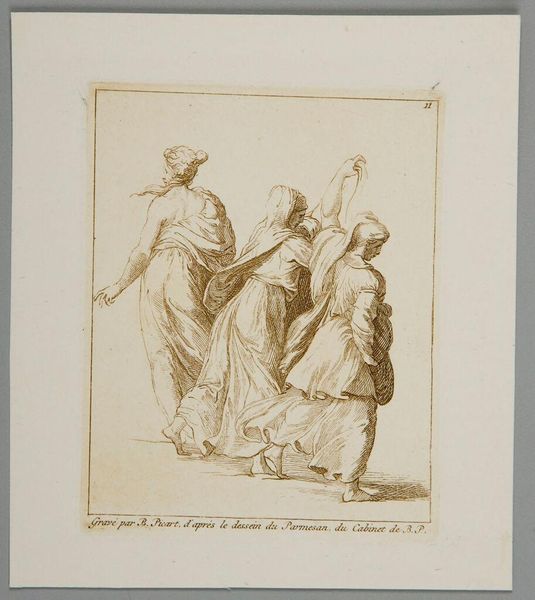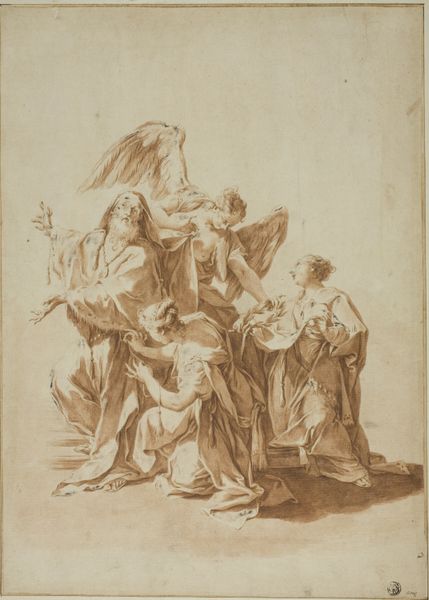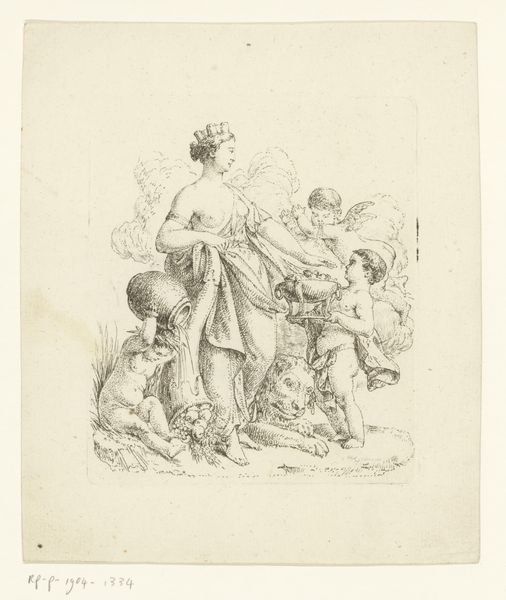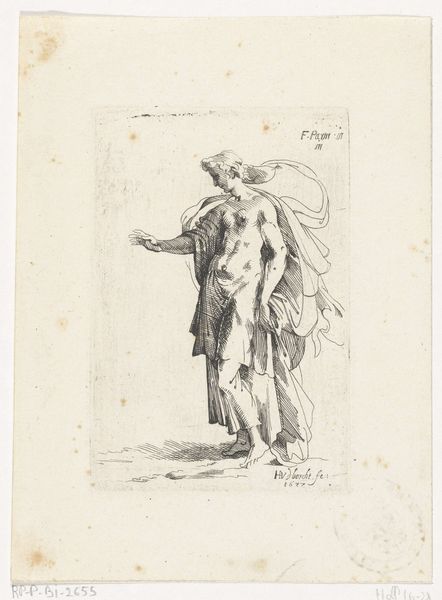
drawing, pen
#
portrait
#
drawing
#
baroque
#
figuration
#
pen
Dimensions: height 213 mm, width 169 mm
Copyright: Rijks Museum: Open Domain
Editor: This pen drawing, "Drie Vrouwen," or "Three Women," by Frederick Bloemaert, dates from around 1650 to 1700 and is currently held at the Rijksmuseum. There is something captivating about its simplicity, almost like a classical frieze. How do you interpret this work? Curator: Looking at this piece, I'm struck by its presentation of idealized femininity filtered through a very specific societal lens. The women are rendered in a classical style, referencing ancient sculpture. Consider the time in which it was produced. What role would idealized images of women play in society then? Editor: To set standards of beauty, maybe? Reinforcing gender roles, like silent muses, not active participants in public life? Curator: Precisely! Bloemaert worked during the Baroque period. Images like these often circulated amongst a specific elite, reinforcing ideas about decorum and social order. Note how they're presented – unclothed or barely draped, evoking both virtue and vulnerability, which could function as warnings or idealizations, depending on the viewer and context. What do you think this suggests? Editor: So, these women aren’t just aesthetic objects; they’re embedded in a network of power, shaping and being shaped by societal expectations? Curator: Exactly. And consider the role of the Rijksmuseum itself. How does the institutional framing of this work affect its meaning today? Is it still a lesson in beauty, or has its presence here granted it the role of a historical document that we interpret, even challenge? Editor: That’s fascinating. I hadn’t considered the museum as a key part of how we "read" it. I initially saw a graceful study, but now I see how profoundly the drawing speaks to its socio-political world. Curator: Indeed, analyzing art through this lens helps us understand how these images once functioned and their resonance in our contemporary world.
Comments
No comments
Be the first to comment and join the conversation on the ultimate creative platform.

